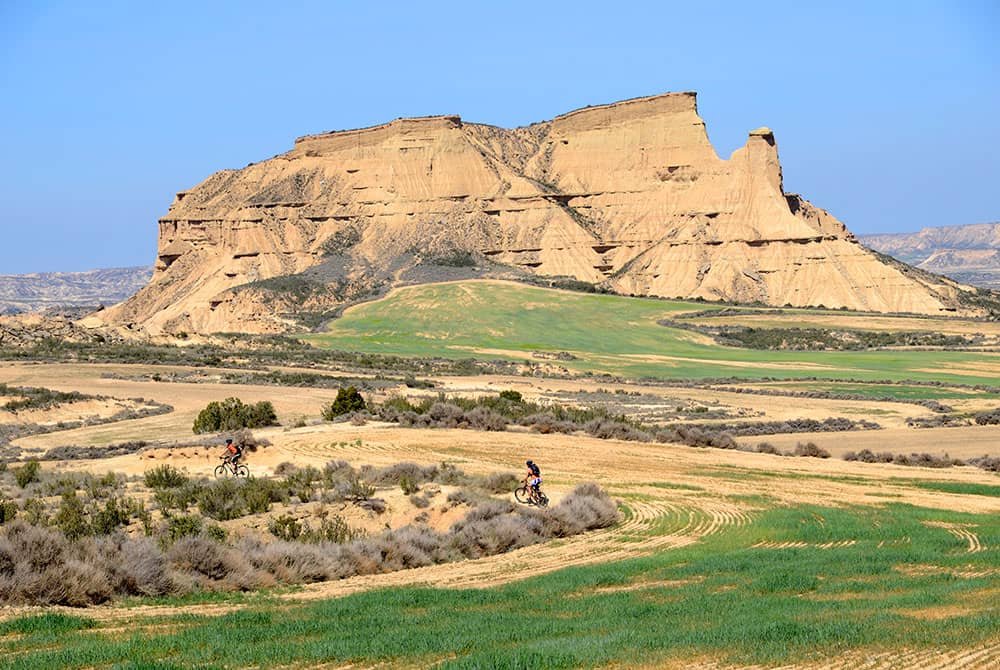
To prevent or reverse desertification effectively the sustainability of ecosystem services needs to be promoted by local management and macro policy approaches. The exploitation of natural resources, climate change caused by human factors and deforestation cause landscapes to degrade.
The increase of desertification has also increased the amount of loose sand and dust that the wind can pick up ultimately resulting in a storm.
Desertification impacts not only nature including flora, fauna, and soil nutrients but also the people who live in affected areas. It has been estimated that some 10–20% of drylands are already degraded which is home to more than 2 billion people. According to the UN, around 90% of grassland in Mongolia is considered vulnerable to desertification.
Can Desertification be Stopped?
Dust and sand storms can have a negative effect on the climate which can make desertification worse.
Desertification is not just limited to areas in and around existing deserts. The regions known as drylands are most susceptible to desertification. These are already desiccated lands with scarce water. As climate change becomes extreme, the instances of drought and floods will increase in these areas.
More dryness means more soil erosion and arable land losing its fertility. Sand dunes and storms will become frequent as when the wind blows dry land, it sweeps away the loosened dust and soil particles. Even deforestation is leading to desertification in areas in drylands.
Poor land management practices such as overusing fertilizers in the farms also make the land acidic, turning it barren.

How to Prevent Desertification?
We have the tools that we need in order to get through the processes effectively.
Protect forests from wildfire and stop cutting down forests in Brazil, Indonesia, and Borneo where huge areas of forest are been cut in order to be converted into agricultural land.
Trees are being destroyed at an alarming rate. There are many practical and impractical ways to resolve deforestation. The question is why do we need to cut forests? Simply because to create more and more resources and space.
- Corporations can implement anti-deforestation policies to operates in ways that do not harm the environment.
- Corporations are huge consumers of paper. Management can work towards a paper-free office by shifting towards email and soft copies, and also encourage their employees to recycle.
- The cutting down of trees must be encountered by replacing old ones that were cut with young ones.
- Everybody should understand the need to recycle. Instead of throwing paper away, we can always seek to recycle it or use it for other purposes.
- By purchasing recycled products, we can encourage more companies to produce recycled products, which deals less damage to our forests.
- For ecological deforestation to end, paper consumption must be drastically reduced. Opting for paperless bills, soft-copies significantly contributes towards mending the harmful effects of deforestation.
- Wood is still used as fuel in some places, especially developing countries. Purchase renewable energy, such as Solar, geothermal and wind energy to help stop deforestation.
So technology can indeed defeat desertification. Most popular in the middle east region to grow grass and similar plants used as fodder for animals. Basically, sprinklers are attached to the arm and there are wheels to rotate the arm with a pivot in the center. With minimal human interference, the whole area can be watered regularly with the system. Unlike traditional farms which are rectangular fields, the farming is done in circles.
The water is usually taken from deep groundwater or private desalination plants. In some cases provided by the government through pipes at a subsidized rate. In all cases, the water supply is not sustainable, but these farms are incredibly water efficient, by using center pivot irrigation, and an impermeable underground substrate to recover the water used.
Permaculture is a proven solution. Also, practices such as the restoration of range land to original prairie condition ( with bio diversity and a mix of grass and forb plantings), and prudent land management strategy that mimics nature (such as grass feed beef with rotational grazing) are proven solutions.
How to Reverse Desertification?
It’s possible to cool a climate and reverse desertification by planting trees. In Israel, the average rainfall has increased after hundreds of millions of trees were planted. Israeli forests are the product of a major afforestation campaign by the Jewish National Fund
China lost approximately 660,000 squares miles of land to deserts between 2005 and 2009 alone. According to Chinese reports, there have been nearly 66 billion trees planted in China’s great green wall. The green wall of China has decreased desert land in China by an annual average of 1,980 square km.
In 2007 the African Union started the Great Green Wall of Africa project in order to combat desertification in 20 countries. The wall is 8,000 km wide, stretching across the entire width of the continent and has 8 billion dollars in support of the project. The Great Green Wall has created many job opportunities for the participating countries.
Trees can benefit an effort to stop desertification, but they are better in a secondary role. The primary role needs to be short vegetation such as grass, bamboo, or crops. Even with those there is often a dormant period of the year. That needs to be avoided.
If the land has perennial grass on it such as bermuda or zoysia the grass will go dormant in the fall and not come back to robust growth until spring or even late spring. Overseeding with a winter annual grass like ryegrass can keep a growing root in the ground over the other 6 or more months of the year.
The modern approach is to establish 30 to 150 paddocks. Then put the livestock on one paddock. When the grass/plants in that paddock is eaten down 30–50% move the livestock to the next paddock in a rotating pattern.
Another approach is to use (more) solar, wind, batteries and nuclear (preferably, the advanced, more efficient types such as molten salt reactors) to build desalination plants and water infrastructure.
Grow crops that are best suited for desert climate. The new soil will have captured much of the excess CO2 that humanity has put into the air, since not all of the carbon is released back into the air when the plants die.
The most evident way to restore vegetative cover is to protect it from the causes of degradation: mostly exploitation (harvesting and grazing) and fires. Vegetation can spread naturally, even on bare lands
Farmer-managed natural regeneration (FMNR) is another technique that has produced successful results for desert reclamation. Since 1980, this method to reforest degraded landscape has been applied with some success in Niger.
In the 1980s Yacouba Sawadogo began to teach the ancient technique “zai” where you pit dug, allowing crops to withstand drought in hardened soil by concentrate nutrients and water. This technique had been used to reduce the hunger in Burkina Faso and Niger and to restore thousands of hectares of dry land. Later his approach was adopted by aid agencies working to prevent hunger in the region.
You can learn more about the Sawadogo and his story in a 2010 film called “The Man Who Stopped the Desert“.
If we as a whole family of mankind take responsibility for regreening deserts everywhere, we might lessen hurricanes and heatwaves in our western world.



